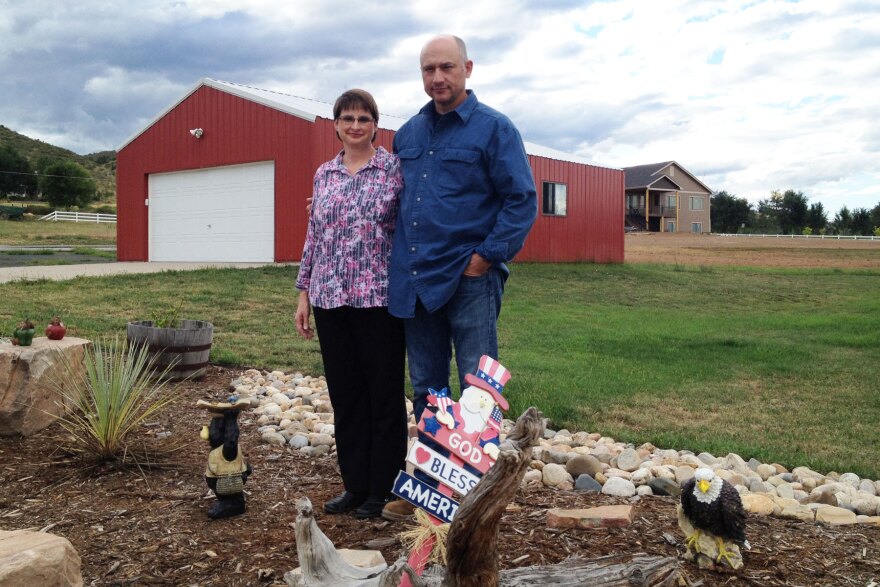After waters washed over Boulder, Larimer and Weld counties during the September flood, many started to rebuild. Others haven't been able to go back.
The easiest way for Ed and Sarah Egloff to describe their lost home in the Big Thompson Canyon is to tell you what remained on the property afterward.
“The only thing that was in the place where I thought it should have been was the ground rod for the electrical service,” said Ed.
The couple raised their two children and lived for almost two decades in that house — which was built after a 1976 flash flood caused massive damage in the canyon. The home was supposed to withstand future floods.
But when the water rose in 2013, Sarah said it took their home, their cars.
"It's a new canvas, we can begin a new painting."
“The things you really miss that you can’t get back are your pictures,” she said.
The Egloffs had flood insurance on the structure of their home, but not its contents.
As they filled out mountains of paperwork to claim their $250,000 policy, they began to work through a complicated financial puzzle. They lived in a rental property, continued working and starting buying furniture — all the while paying the mortgage on a home that didn’t exist.
“We didn’t do anything drastic until we found the new house here,” said Ed, referring to a white one-story home they purchased near Masonville. “Once we found that and we talked to the mortgage broker. And they said, ‘OK, now you need to pay that off so that we can get you qualified.’”
A Marathon, Not A Sprint
Eventually the Egloffs got to that huge milestone, moving into a new home. Other families haven’t been so lucky. Larimer County Recovery Manager Suzanne Bassinger said many families are still struggling.
“Here we are on the one year anniversary. People are just starting to think about permanent repairs,” Bassinger said.
Few residents with severe damage had flood insurance because many were outside what was traditionally considered the flood plain. The Federal Emergency Management Agency stepped in to provide more than $61 million in grants through its Individual Assistance Program to Colorado survivors. Meantime, the Small Business Administration has doled out more than $80 million in low interest loans for homeowners.
Despite the assistance, Bassinger said home rebuilding efforts have moved at a slow pace. Just 38 homes or cabins have passed the final stage of inspection after repairs across the county. 338 homes saw significant damage.
Road construction has been — and will continue to be — another hurdle. Along the critical U.S. 34 highway, residents are expected to see another round of road reconstruction in the coming years.
“We don’t even have a permanent design yet, which gives you an idea of the time frame to put this land back to where it was before,” said Bassinger.
‘A New Canvas’
At Ed and Sarah Egloff’s newly furnished home, there are new challenges. Like figuring out what how to sell the hay that now grows on their land.
“It’s definitely not our other house, but it’s a new opportunity for us. We were very lucky,” said Sarah.
Ed echoes that thought, “It’s a new canvas, we can begin a new painting.”
As they launch a new phase in their lives, there’s one thing from their past they’re not ready to part with. The Egloffs still own the land where their home used to sit in the Big Thompson Canyon.
“So we own a piece of property that’s worthless. But we still own it. We can’t do anything on it,” said Sarah.
They can’t rebuild on the land, but it means a lot to them. Keeping it is a decision that is both emotional and financial — two components that all flood survivors will be wrestling with in the years to come.







